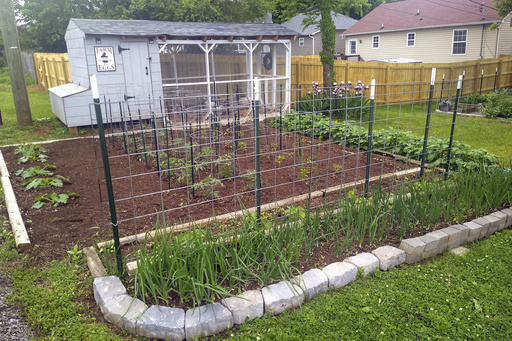NEW YORK — With rising egg prices prompting many to consider raising backyard chickens, potential owners should carefully assess the realities of this commitment, especially given the ongoing bird flu crisis.
The trend of keeping chickens at home has surged since the pandemic, but those hoping to produce eggs should understand that the endeavor requires considerable planning and financial investment. Initial expenses can be significantly higher than the average commercial egg price of $4.15 per dozen recorded last December.
“There really aren’t any inexpensive eggs when it comes to chicken keeping,” emphasized Kathy Shea Mormino, a seasoned chicken owner and blogger from Suffield, Connecticut, who has around 50 chickens. “In the first few years, your setup and care costs can add up. There’s also a steep learning curve in managing these unique pets,” Mormino shared, reflecting on her 15 years of experience in chicken care.
The startup costs for a chicken coop can range broadly, anywhere from $200 to $2,000, while additional equipment like feeders and water containers can cost between $8 and over $50. The ongoing bird flu outbreak has led to the culling of millions of chickens, exacerbating egg shortages and prices, which has driven some people to explore home chicken keeping as a viable solution. “We’ve noticed an increased number of inquiries from individuals interested in starting personal flocks. The egg shortages have spurred interest in raising chickens and pursuing sustainability,” explained Matthew Aversa, co-owner of Winding Branch Ranch, a nonprofit rescue and sanctuary for farm animals located near San Antonio.
Kate Perz, who oversees animal science for Cornell Cooperative Extension in Suffolk County, New York, indicated that unlike other hobbies developed during the pandemic, raising chickens at home has continued to attract new enthusiasts. “It’s not always the most cost-effective option. Evaluating your egg consumption against the costs involved is essential,” she warned.
There are also many emotional and experiential benefits that come from keeping chickens. Mormino and other enthusiasts offer a wealth of advice for those looking to start their own flocks.
First, it’s crucial to consider the legalities surrounding urban and suburban chicken keeping. Mormino, author of “The Chicken Chick’s Guide to Backyard Chickens,” urged prospective owners to verify whether their municipalities permit chickens. This often involves researching local zoning and building regulations. Consulting a local attorney knowledgeable in municipal laws may help clarify any uncertainties, as town officials or unverified sources may not possess accurate information.
It’s vital to clarify whether you need a building permit for a coop or if there are restrictions on the number of birds allowed. Many homeowners’ associations impose specific rules about animal keeping. Mormino recounted her own experience of wrongly assuming she could keep chickens and ended up in a legal battle that ultimately led to a successful amendment allowing backyard chickens in her farming community.
Given the aggressive nature of bird flu, it is essential for chicken owners to understand transmission risks. The virus spreads primarily through migrating waterfowl and their droppings. Mormino stressed that if any of your birds fall ill or die unexpectedly, it’s crucial to contact the USDA for testing and handling advice. Once a bird flu diagnosis is confirmed, the entire flock must be euthanized to contain the outbreak.
Signs of bird flu can include sudden death, swelling in various areas, diarrhea, unsteady movements, a drop in egg production, and respiratory distress. It’s also important to avoid feeding wildlife in areas where chickens roam, maintain strict hygiene, and designate specific footwear for interacting with poultry.
Sarah Penny, a chicken keeper from Knoxville, Tennessee, converted her expansive property into a vibrant garden and chicken home, currently housing nine birds. She began her chicken-raising journey in 2021, estimating her initial setup costs at about $2,500. Monthly expenses vary, but she adheres to a deep litter method, reducing her coop maintenance to just two times a year.
Penny acknowledges that entering the world of backyard chickens can be costly. Her custom-built coop set her family back approximately $2,000, designed to protect against predators. Many new owners opt for hatchlings, which have become pricier due to increased shipping costs. These young birds require specialized care, including heat lamps and separate enclosures.
Feeding her chickens costs around $15 to $20 bi-weekly, plus additional expenses for calcium supplements and grit. Penny estimates her monthly total to be about $60, often utilizing human food scraps while avoiding toxic items like onions and avocados. Despite the expenses, raising chickens has been rewarding for her family.
“We consume a significant amount of eggs — about a dozen every two days. Cooking from scratch is our preference, and eggs are a staple in our household,” Penny stated.
